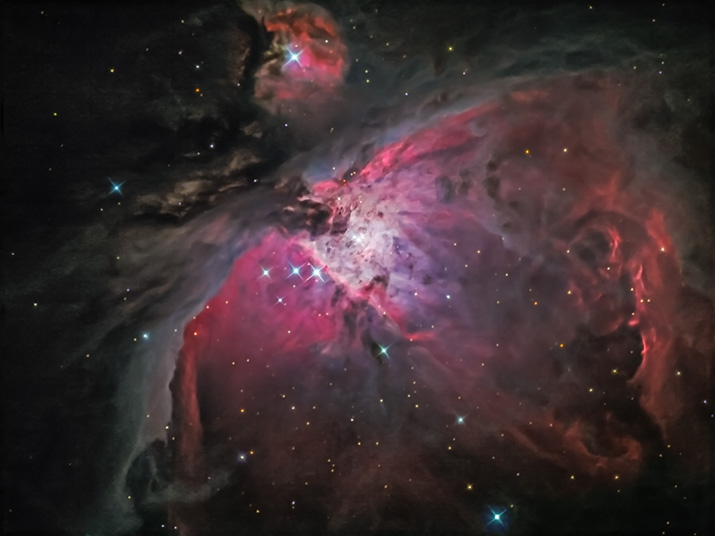
| Date: Jan. 04, 2023 - Location: Davis Mountains west of Fort Davis, TX Click on the image to view at higher resolution. |

| M42 - The Great Nebula in Orion Located in the constellation of Orion the Hunter at a distance of approximately 1,500 light years1, is The Great Nebula in Orionn1, (M42) is the brightest diffuse nebula in the sky1. Due to its prominence, the Orion Nebula is probably the most studied3, and imaged, HII region by both amateur and professional astronomers. M42 is located around the second star in the "Sword of Orion" and is visible during the winter months in the Northern Hemisphere. Under moderately dark skies, it is visible to the naked eye as a fuzzy star. It is a rewarding and impressive sight in telescopes of every size, from the smallest glasses to the greatest Earth and Space telescopes. The stars in the nebula are very young and observations from the Hubble Space Telescope2 have detected new stars currently being formed from the gasses and dust of the nebula. Some of the recently formed young stars can be seen as bright spots in the clouds of gas. These stars are still partially obscured by the nebula gas. The bright central portion of the nebula is known as the Trapezium. Its name comes from the central cluster of four bright young stars arranged in a trapezoidal asterism2. Under good seeing, and using a small amateur telescope, up to six stars can be detected in the Trapezium cluster. The small nebula located just above the "body" of M42 is designated M43 and is included as a separate object in Messier's catalog;however, most consider it a part of the Great Orion Nebula. Member of the Dark Sky Observatory Collaborative References1Wikipedia: https://en.wikipedia.org/wiki/Orion_Nebula 2NASA: https://www.nasa.gov/feature/goddard/2017/messier-42-the-orion-nebula 3B. Balick, et al: https://articles.adsabs.harvard.edu/pdf/1974PASP...86..616B
|